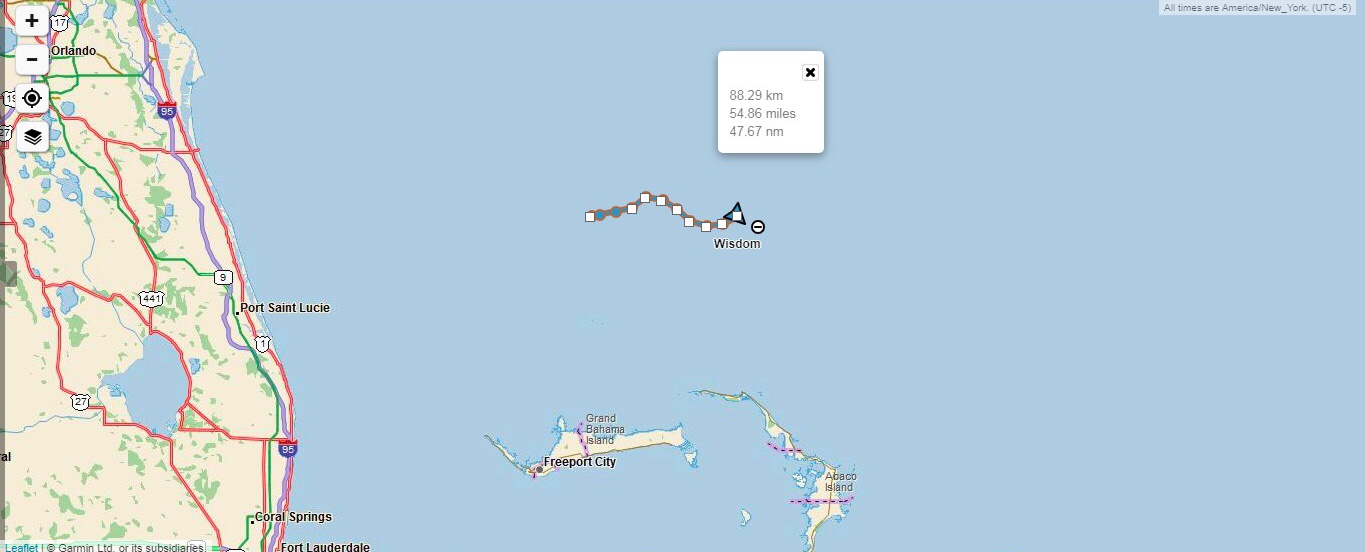We are not moving! There is no wind, no current, and no progress.
When we looked at the weather map, we see gales to the north, and an approaching 1020 line, but we are on the wrong side of the line to get any benefit from it.
Winds rotate clockwise around the center of a high pressure system and counter clockwise around a low pressure system (in the Northern Hemisphere), so the wind of a 1020 rotates clockwise in a direction tangent to the line. If you are on the right side of the circle, the winds will blow you South. If you are on the bottom of the circle, the winds will blow you West. We are pretty much set just under the line, so any contact with this wind will slow us down even further than we already are!
The 1020 line we want is now East of the Lesser Antilles! If we head North, we are going to be tossed around in gales. If we stay where we are, we will not have storm conditions.
Our destination is pretty much in the center of the “H” denoting the center of the high pressure system that forms over the Azores, also known as the Azores High. We want to get there, and usually the route is really simple. Ride the Gulf Stream and the 1020 line around the Atlantic until you are close, then sail on into the Azores island chain.
The issue is there is another high pressure bubble that came off the East Coast of North America and has generated various gales that seem almost stationary at the border of these two giant high pressure systems.
Instead of getting caught up in that whole mess, we continue to drift East. We aren’t moving, but we still have our crew member on board (as agitated as he is with our slow progress through the water) and he can’t leave us!












